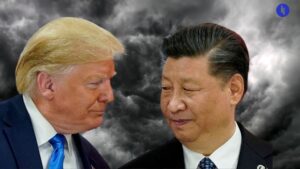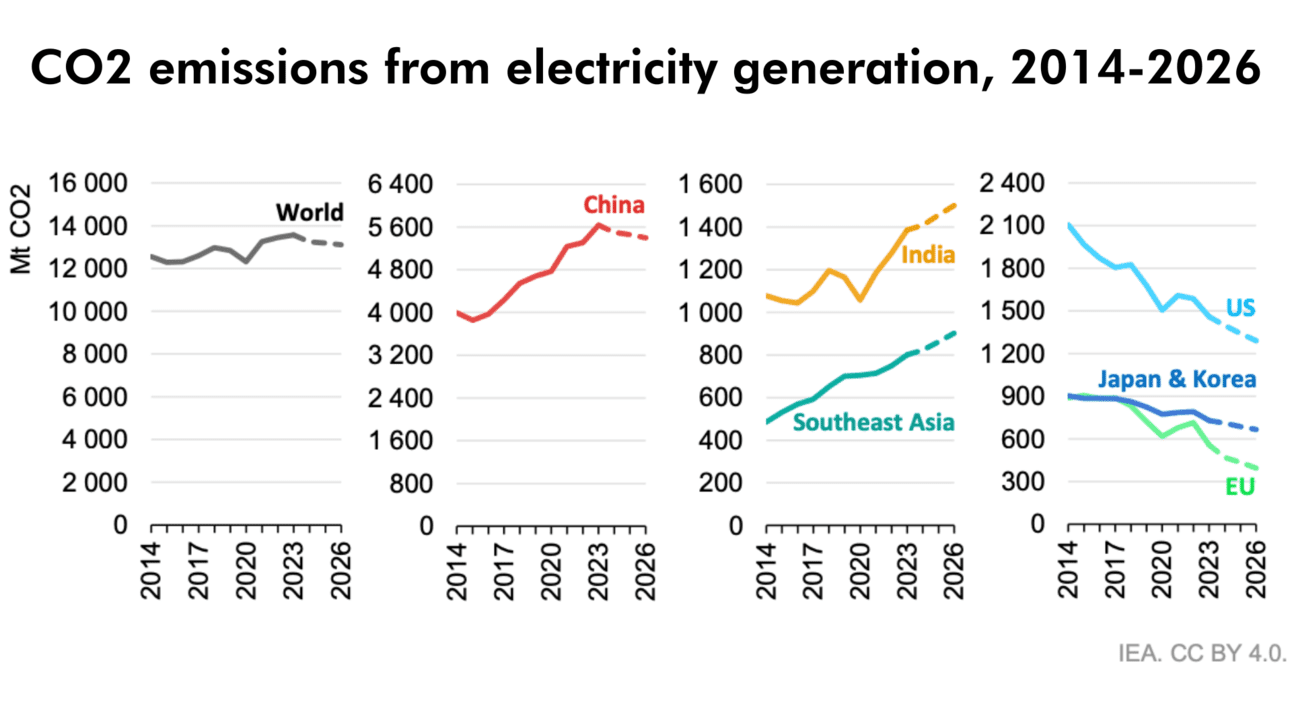The Paris-based International Energy Agency (IEA) released its latest electricity report on Wednesday, tracking developments in global electricity markets and projecting industry trends through to 2026.
No time to leaf through its 170 pages? Here are five things you should know:
1) Low-emissions sources (including nuclear power) will account for almost half of global electricity generation by 2026
Stay on top of your world from inside your inbox.
Subscribe for free today and receive way much more insights.
Trusted by 129,000+ subscribers
No spam. No noise. Unsubscribe any time.
Interestingly, renewables could dethrone coal as the world’s largest electricity source in 2025, hitting 37% of the total (up from 30% now). Half the world’s coal generation now takes place in China, but China also commissioned as much solar last year as the rest of the world combined, so its power sector emissions might’ve now peaked.
Meanwhile, though not growing as quickly as renewables, nuclear is projected to hit a record 9% of the world’s energy mix in 2026 thanks to new capacity in China and India. In parallel, the IEA chief just called (🇩🇪) Germany’s nuclear phaseout last year a “historic mistake” 🔥🔥🔥.
2) CO2 emissions from electricity generation are in “structural decline”
In fact, they’re expected to fall by 2% this year alone – a big deal when you remember the power sector is the world’s top emitting industry. Still, regional differences remain, with power generation emissions increasing in South and Southeast Asia.
3) Global electricity demand grew by less than expected in 2023
The difference was small (0.2%), but the drivers were interesting: relatively mild weather on the American continent contributed to a 1.6% drop in the US, while “permanent demand destruction” nudged a 3.2% drop in Europe.
That’s another way of saying the EU’s energy-intensive industries like chemicals and metals lost out to the US and China, where electricity costs were half those in the EU. But Europeans will be relieved to know the IEA is projecting a recovery.
4) Growth in global electricity demand is projected to increase
It’ll average 3.4% from this year (up from 2.2%), and about 85% of that new demand will come from the emerging world, particularly China. But another driver will be data centres, which could consume as much electricity as Japan by 2026.
AI and crypto are also key drivers, though they’ve surprised us before: Ethereum (the second-largest cryptocurrency by market cap) once cut its electricity use by 99% in a single year, just by tweaking its mining mechanism.
5) Electricity prices have fallen from their 2022 peak, but are still higher than their pre-Covid levels
Europeans in particular still face electricity prices double their 2019 levels, a lingering side-effect from Russia’s invasion of Ukraine.
IEA Executive Director Fatih Birol summed up the report’s findings, saying “while more progress is needed, and fast, these are very promising trends”.
INTRIGUE’S TAKE
Three things come to mind here.
First, it’s easy to lose sight of the fact that the world’s top two electricity sources right now are still coal and gas. It’s a reminder that energy transitions have tended to look more like energy additions as new sources come online.
But second, today’s transition-addition is moving rapidly, and the world’s goal of tripling renewable capacity by 2030 is now looking within reach.
And third, this generates all kinds of interesting technical problems like the famous ‘duck curve’, where net demand collapses during the day then spikes at sunset (because of the mismatch between energy usage and solar output).
And that’s generating some intriguing solutions. Batteries will do the heavy lifting, but other ideas will play their part: there’s a company storing excess daytime energy as ice, then using it to cool buildings at night.
And governments are now offering free daytime electricity to low-income households to lend them a hand, help shift grid demand into the daytime, flatten the duck curve, and thereby stabilise the grid.
Honestly? It’s a heck of a time to be alive.
Also worth noting:
- IEA Chief Fatih Birol triggered a global debate last year when he warned that companies and countries expanding their fossil fuel projects were taking “very unhealthy and unwise economic risks”. Some analysts also doubt the IEA’s projection that peak oil is nigh.
- The IEA report also mentions (at page 86) that physical and cyber threats to some electricity grids have surged, putting a premium on efforts to secure new energy infrastructure as it comes online.







